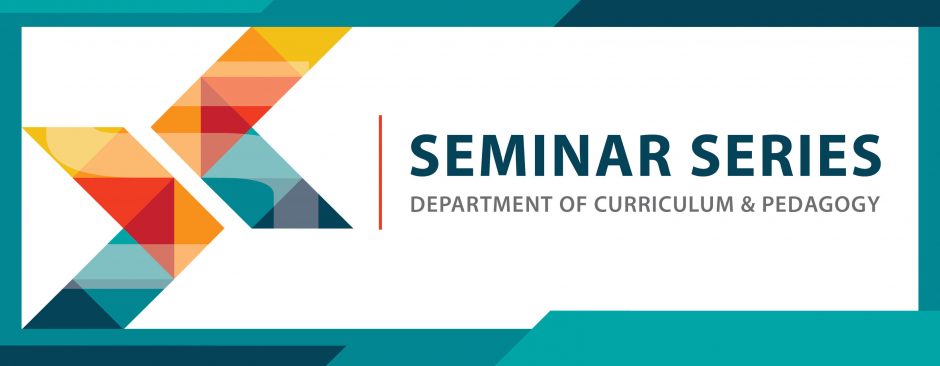
Dr. Anna Hickey-Moody | Royal Melbourne Institute of Technology, Australia
Thursday, October 19, 2017 | 2:30 – 4:00 pm | Scarfe 310
View the Seminar Poster
Abstract
Anna Hickey-Moody is a Professor of Media and Communication, ARC Future Fellow and VC Senior Research Fellow at the Royal Melbourne Institute of Technology, where she is based in the Digital Ethnography Research Centre.
Between 2013 and 2016 Anna was the Director of the Centre for Arts and Learning at Goldsmiths College, London and Head of the PhD in Arts and Learning. Anna has also held teaching and research positions at The University of Sydney, Monash and UniSA. Anna is known for her theoretical and empirical work with socially marginalized figures, especially young people with disabilities, young refugees and migrants, those who are economically and socially disadvantaged, and men at the margins of society. She is also known for her methodological expertise with arts practice, or practice research, ethnography and methodological invention. Her books include “Imagining University Education: Making Educational Futures” (Routledge, 2016), “Youth, Arts and Education” (Routledge, 2013), “Unimaginable Bodies” (Sense Publishers, 2009) and “Masculinity Beyond the Metropolis” (Palgrave, 2006).
Short Bio
I look to establish transversal strategies for changing public culture and crafting interfaith belonging in Australia and the UK through socially engaged arts practices. This talk discusses the early stages of a trans national art project that is designed to intervene in Islamophobic cultural imaginaries through socially engaged art as a vehicle for relationship building and social cohesion. Socially engaged arts practices make new forms of sociability, they are intra-active, diffractive methods through which we are able to craft new social faces. Quantum literacies are the modes through which socially engaged arts practices occur: they are at once critical, performative, intra-active. Taking into account the multiple processes of material-discursive production, translation, transformation, and diffraction that constitute socially engaged arts practice, I consider the material-discursive space of socially engaged arts practice as a way of re-assembling and re-making multicultural urban spaces currently fractured by differences in belief. The transversal line of art practice with interfaith youth zigzags across, and brings together, a diverse selection of bodies, beliefs, knowledges, skills, and creates a material-discursive documentation of group subjectivity. I will examine the ways aesthetic practices perform a group subjectivity created through collaboration. Such a bringing together of nature and culture, of different races and beliefs in urban environments, is urgently needed.